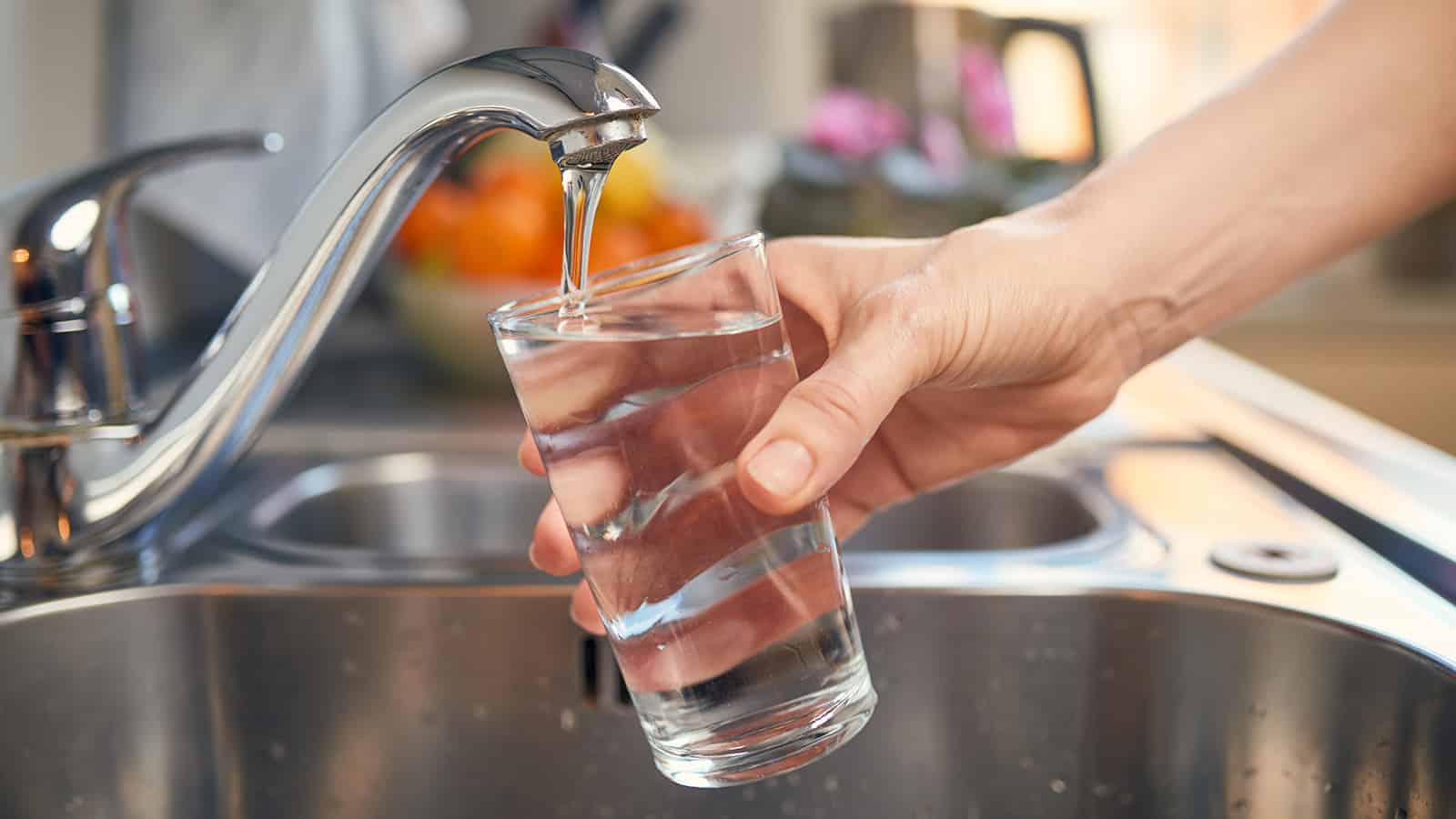New research discovered that tap water provides a protective barrier against harmful microplastics. This natural shield can help prevent everyday household items containing plastic from emitting tiny plastics. Products such as plastic bottles, food containers, kettles, and teabags have high levels of microplastics (MPs). Alarmingly, plastic cups, polypropylene baby bottles, and plastic teabags can release over a million MP particles per liter.
When plastics come in contact with hot water (70–100°C), it causes the chemical bonds in plastic break. This reaction releases toxic chemicals into the water, which then make their way into our bodies. A study found that microplastics in hot water are 2 to 8 orders of magnitude higher than MPs in drinking water. Of course, ingesting microplastics from any source can lead to severe consequences.
Studies have found that the ubiquitous nature of MPs affects “all spheres of life and ecology.” In humans, researchers found that exposure to MPs can lead to health problems such as:
- Oxidative stress
- Inflammatory lesions
- Metabolic diseases
- Neurotoxicity
- Increased cancer risk
- Cytotoxicity
Despite this troubling discovery, researchers have found that clean drinking water can decrease these health risks. While some people prefer filtered water to tap water, this latest study provides a reason to drink more of the latter.
Drinking Tap Water Can Help Stop Ingestion of Microplastics, According to Research
A team of scientists from AMBER, the SFI Centre for Advanced Materials and Bioengineering Research, Trinity College Dublin, and University College Dublin performed the study. The research was published in the Chemical Engineering Journal.Researchers found that tap water contains trace elements and minerals which stop plastics from degrading into microplastics. Microplastics release various toxins like trace metals and dangerous organic chemicals into drinking water. Previous studies on MPs have only utilized forms of freshwater, however. These types of water only exist in laboratories, therefore not considering impurities and toxins in tap water.
To imitate real-world conditions, scientists created synthetic drinking water (SDW) in the laboratory. They based preparations on WHO standards for safe tap water but modified it to mimic local Tap drinking water (TDW) composition. They found similar levels of MP released from plastics exposed to TDW and SDW. This shows that SDW is an effective model to analyze MP release levels from household plastics.
Professor John J Boland from AMBER and Trinity’s School of Chemistry, a co-leader of the research team, said this: “It is well known that plastics can degrade and release microplastics, which can get into the environment and be consumed by humans. Our research shows that many items such as plastic kettles, which are repeatedly used with tap water, can develop over time a protective skin that prevents the release of microplastics entirely.”
How Copper Prevents Microplastics from Leaching into Tap Water
The study found that these natural passivation films can reduce MP release by a staggering 99.8%. Plastics exposed to hot (40–100 °C) SDW and TDW gradually developed a Copper (II) oxide (CuO) passivation film. This occurred due to the presence of Cu2+ ions in the water samples. Scientists observed similar protective films forming on 97% of all food-grade plastics.
“Because tap water is not 100% pure H2O — since it contains trace elements and minerals, what we showed is that if you include these trace elements and minerals, the degradation of plastics in tap water is completely different,” Boland said.
The research revealed that copper oxide films could help block microplastics from entering drinking water. The natural phenomenon occurs during exposure of plastics to drinking water. Higher water temperatures enhance this effect, and the film builds up over time with the regular use of plastic products. Most importantly, researchers found that repeatedly cleaning the plastic items doesn’t wash away the CuO film layer.
“Rather than the plastics falling apart, the minerals coat the plastic and prevent any degradation, and so the product becomes microplastic-free. For example, that dark brown color in your kettle is a good thing. It is a copper oxide that forms from copper minerals in your tap water, which in turn comes from the copper pipes in your house — all these combine to give perfect protection to the kettle.”
Future Implications
This study promises a future of sustainable plastic that doesn’t leach harmful chemicals into the environment. Study authors say that more research is needed to understand the MP reduction mechanism further. They hope that existing plastic coating technologies can utilize these findings to create MP-free products.
“This discovery is important because we have learned that these types of protective skins can be manufactured in the laboratory and directly applied to the plastic without having to wait for it to build up naturally. This discovery also shows that nature is leading the way, pointing to solutions to what is a very significant problem facing our modern high-tech society.”
Three Ways to Lessen Your Exposure
While microplastics exist in virtually every part of the globe, you can still reduce your exposure. Follow these simple tips to steer clear of MPs:
- Drink tap water instead of bottled water. Stainless steel or reusable glass bottles make great alternatives to plastic.
- Don’t reheat takeout in plastic containers. If you’re taking food to-go, bring your plastic-free container when possible. Opt for silicone, cardboard, or biodegradable fiber containers instead.
- Avoid or limit seafood intake. Since microplastics are so common in waterways, marine life regularly ingests them. Mussels and oysters, in particular, have high levels of microplastics.
Final Thoughts on a Study Finding That Drinking Tap Water Inhibits Microplastic Ingestion
Unfortunately, microplastics have made their way into almost every ecosystem and creature on the planet. Since they’re so small, they go undetected much of the time, but they can cause lasting health problems when ingested. Luckily, researchers have found a way to lessen exposure to microplastics.
They found that drinking tap water, significantly when heated, can lower microplastic release by up to 99.8%. With regular use, household plastic items build up a protective skin comprised of copper oxide, which blocks microplastic ingestion. The study authors hope that this finding will lead to improvements in plastic products moving forward.
















 Community
Community

